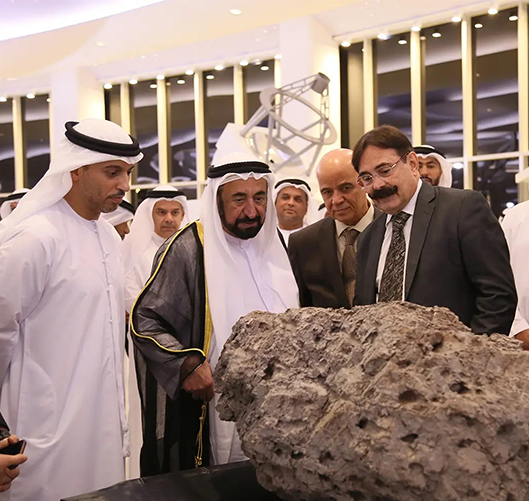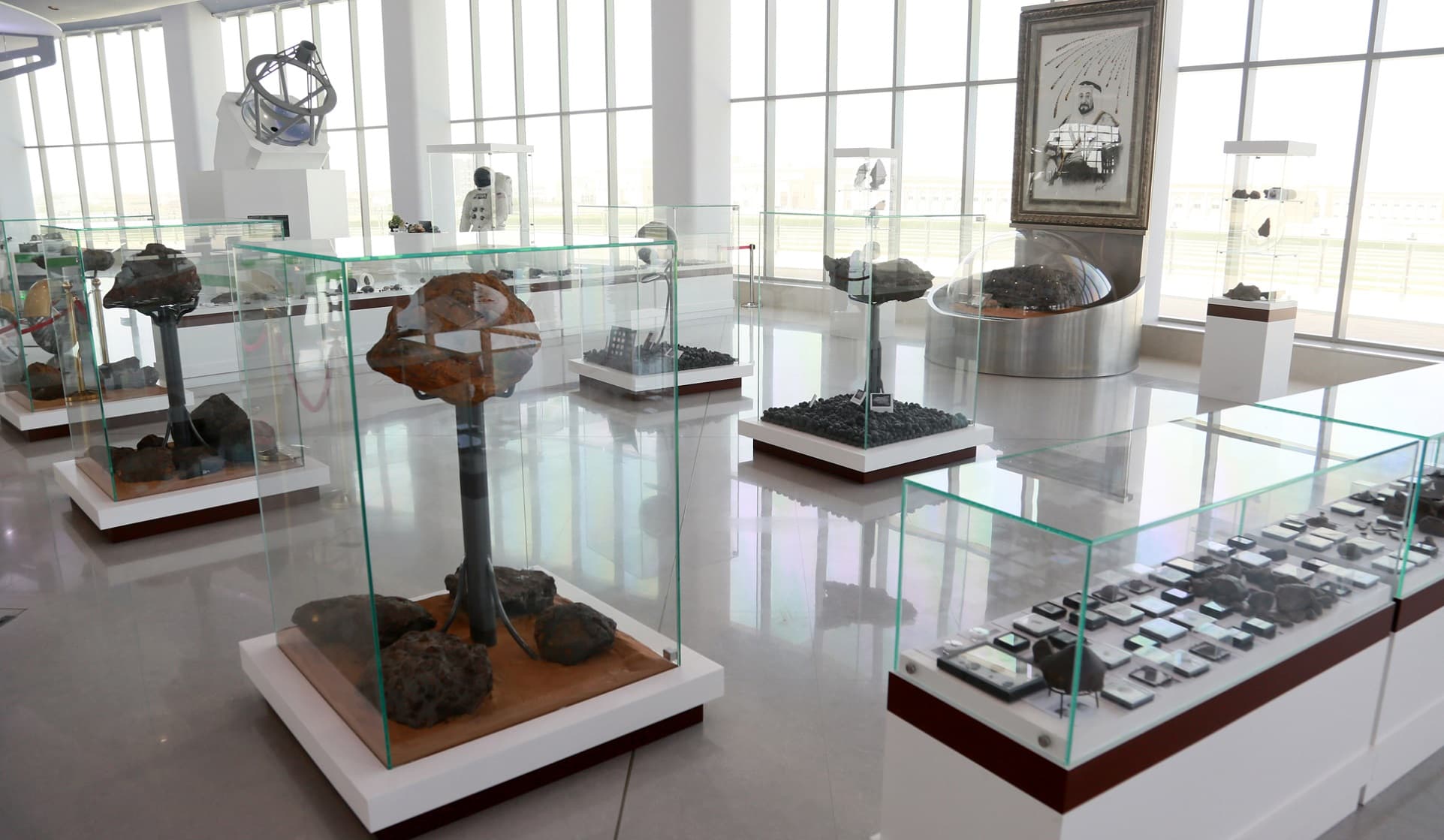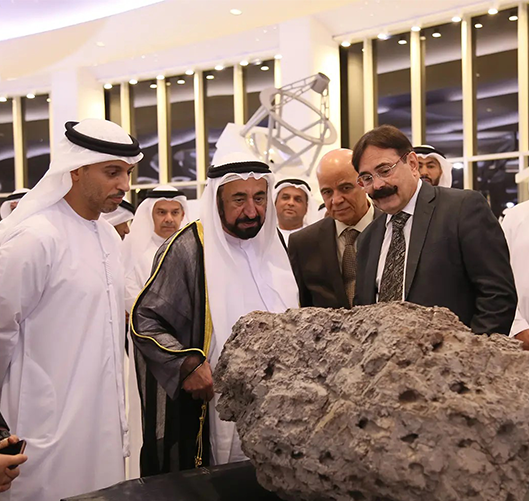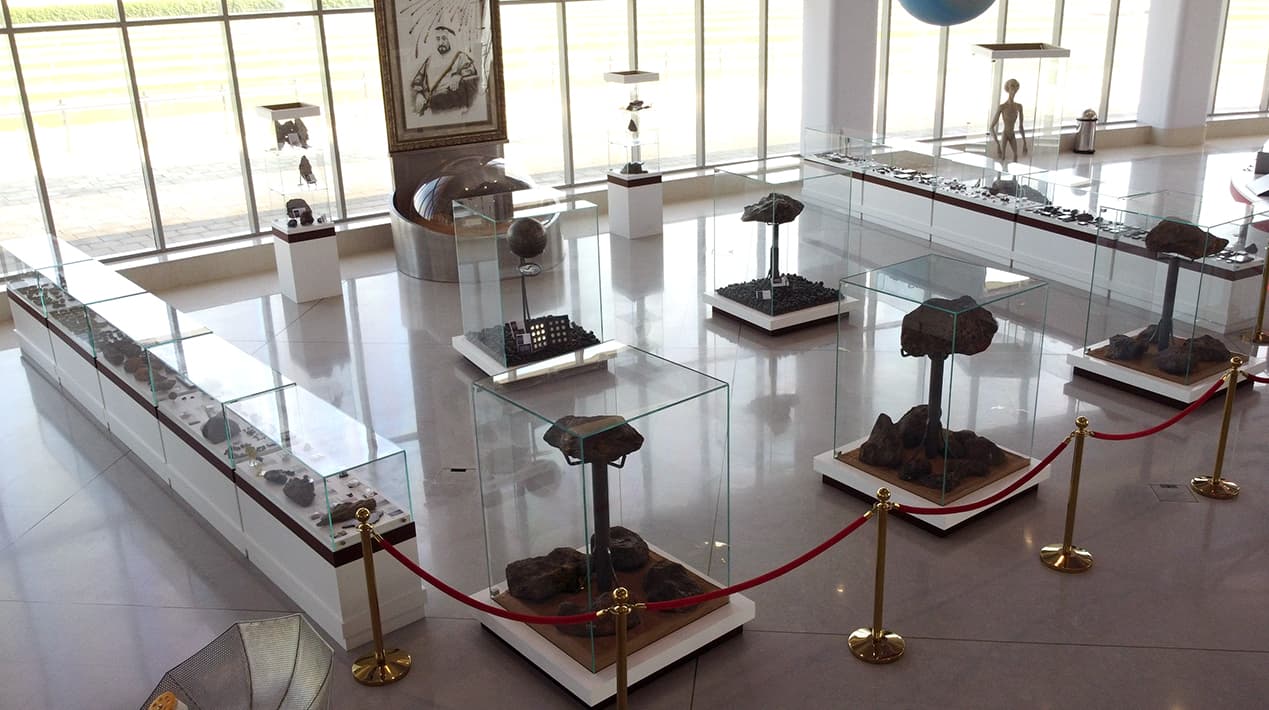
Overview
His Highness Sheikh Dr. Sultan Bin Mohammed Al Qasimi, Member of the Supreme Council, Ruler of Sharjah, and Founder of the University of Sharjah, has generously donated an extraordinary collection of over 8,000 specimens to the Sharjah Academy for Astronomy, Space Sciences, and Technology (SAASST). This collection, gathered from around the world, includes a diverse array of meteorites and impactites, featuring visually impressive and massive iron meteorites specifically curated for exhibition. With more than 3,000 kilograms of iron meteorites ranging from ten to nine hundred kilograms in size.
Meteorites
Meteorites are fragments of rock or metal that have traveled through space and survived the fiery passage through Earth's atmosphere to reach the surface. These fascinating objects offer a direct link to the early solar system, providing invaluable insights into the processes that shaped our planets billions of years ago. Meteorites are typically categorized into three main types:
-
Iron Meteorites: Composed primarily of iron and nickel, these meteorites exhibit a metallic luster and often reveal unique crystal structures, such as the Widmanstätten pattern, when cut and polished.
-
Stony Meteorites: The most common type, these meteorites are made mostly of silicate minerals. They include chondrites, which contain small, round grains called chondrules, and achondrites, which lack these features and are similar in composition to terrestrial rocks.
-
Stony-Iron Meteorites: A rare class of meteorites that are roughly half metal and half silicate minerals. They are visually striking, often containing beautiful olivine crystals set in a metallic matrix.
Impactites
Impactites are a unique category of rocks formed or significantly altered by the intense energy of a meteorite impact on Earth. These rocks are witnesses to the dramatic forces unleashed when a meteorite collides with our planet. Impactites are varied and can include:
-
Impact Breccias: These rocks consist of fragmented pieces of different rock types, fused together by the force of the impact. They serve as a visual record of the chaotic energy released during the collision.
-
Tektites: Small, glassy objects formed from molten material that was ejected and rapidly cooled during an impact event. Tektites are often found far from the original impact site, making them intriguing markers of ancient impacts.
-
Shatter Cones: These cone-shaped structures form in the bedrock under the intense pressure of an impact. Shatter cones are unique to meteorite impacts and help geologists identify ancient impact sites.
-
Impact Glass: Formed when the heat from a meteorite impact melts surrounding rock and sand, which then cools rapidly to create natural glass. This material varies widely in appearance and composition, reflecting the extreme conditions of its formation.
-
Impact Melted Sand: Sand that has been melted by the heat of a meteorite impact and then quickly solidified into a glassy or crystalline form. This material provides valuable insights into the conditions at the impact site.
A Story through the Numbers
Gallery

Meteorite Location Map
Example of Interactive Map, can be represented based on (Type, Weight , ..etc)



